Simplify Your Workflow with Cantonese Speech to Text
Speech-to-text technology is evolving how one talks, writes, and is now able to do things better for people using their mother tongues; thus, in Cantonese speakers' case, great advantages on a quick conversation transcription process with easy accessibility to more straightforward processes. Quick transcription will save individuals a lot of time and labor in such departments. Thus, this Cantonese speech to text technology shall prove to be very important to the Cantonese-speaking community.
Part 1: Challenges of Cantonese Speech to Text
In this chapter, we outline the challenges unique to Cantonese speech-to-text technology. Among these are complexity in tone differentiation, the unavailability of special tools, and issues associated with dialectal variation. This would be a very important reason to appreciate the improvement in this area and make an appropriate choice based on the type of need one has.
Tone Differentiation and Its Impact on Transcription Accuracy
Cantonese is a tonal language, and depending on the dialect, there are six to nine tones that can dramatically alter the meaning of words. Such complexity is challenging for speech-to-text tools since correct transcription heavily relies on proper differentiation between tones.
Limited Availability of Tools Specifically Designed for Cantonese
Unlike English and Mandarin, dedicated Cantonese speech to text tools remain a rarity, mainly because of a tendency on most tools towards less phonetically diverse, widely-used tone language - so resulting inaccuracies and function limits are increased.
Common Issues with Dialect Variations
Cantonese also has different dialects wherein pronunciation and vocabulary are used differently. In most cases, Cantonese speech to text tools is too primitive to support these variations; hence, more errors and inconsistent transcriptions happen. This only makes the tools more complicated when used by those from different places.
Part 2: Top Cantonese Speech to Text Tools
To cater to the variety of needs presented by Cantonese speakers, quite a number of speech-to-text tools have sprung up, with each having particular features tailored toward the complexities in this language. In the succeeding section, some of the best Cantonese speech-to-text tools will be considered, discussing both their strengths and weaknesses to facilitate your choice as you seek one that best suits your needs.
1. Google Docs Voice Typing
Google Docs Voice Typing is a convenient, cloud-based tool that supports multiple languages, including Cantonese speech to text. It allows users to dictate text directly into Google Docs, making it an excellent option for those who need quick and easy transcription services. The tool integrates well with other Google services, enhancing its utility for collaborative work and document editing.
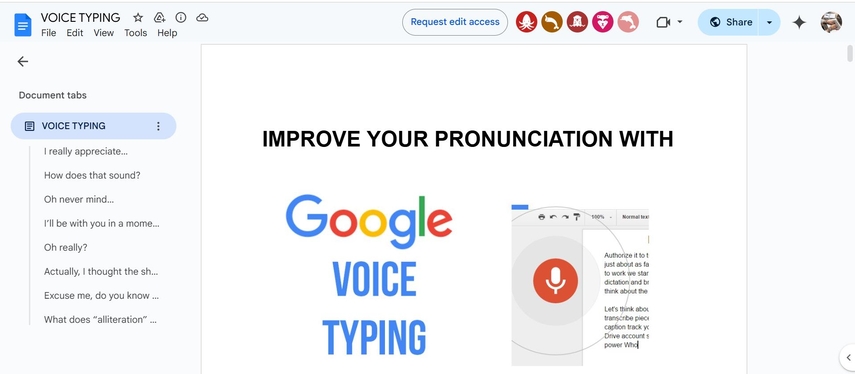
Pros
- Free and accessible with a Google account.
- Interoperable with Google Docs to edit documents fluently.
- Updates are always received from Google to ensure better performance.
Cons
- Language must be switched manually for Cantonese.
- It is used only online and requires an internet connection.
- Accuracy can be poor with background noise and pronunciation.
2. Otter.ai
Otter.ai offers AI-powered transcription, supporting Cantonese as well, and has been highly useful for professionals. It can transcribe conversations in real time, especially when it comes to meetings and interviews. Otter.ai is able to learn through different speech patterns and adapt as it continues using the application; therefore, the accuracy of transcriptions improves.

Pros
- AI learning capability improves accuracy over time.
- Cloud-based storage for easy access and sharing.
- Offers real-time transcription during meetings.
Cons
- Subscription fee for full features.
- Struggles with heavy accents or regional dialects.
- Requires a learning period for the AI to adjust to specific speech patterns.
3. iFlytek Input
iFlytek Input is a mobile app with very robust speech recognition, and it does support Cantonese as well. It offers multiple features like voice typing, translation, and speech synthesis. Its recognition of so many dialects of Cantonese makes it one of the best applications. For these reasons, it is commonly used by all the mobile users. iFlytek Input proves useful for any transcription need of the user, as it is fast and accurate.

Pros
- Accurately recognizes Cantonese speech.
- Free and available with in-app purchases.
- It accepts the vast majority of dialects.
Cons
- Primarily a mobile product with very few desktop applications.
- User interface may not be easy for native users.
- At times, it lags in real-time transcription.
4. Dragon Anywhere
Dragon Anywhere is a professional-grade dictation tool that supports a good number of languages, including Cantonese. The software is targeted for users that require precise transcription services and customize their needs to the fullest extent. Dragon Anywhere offers syncing on the cloud, meaning transcriptions can be accessed from more than one device.
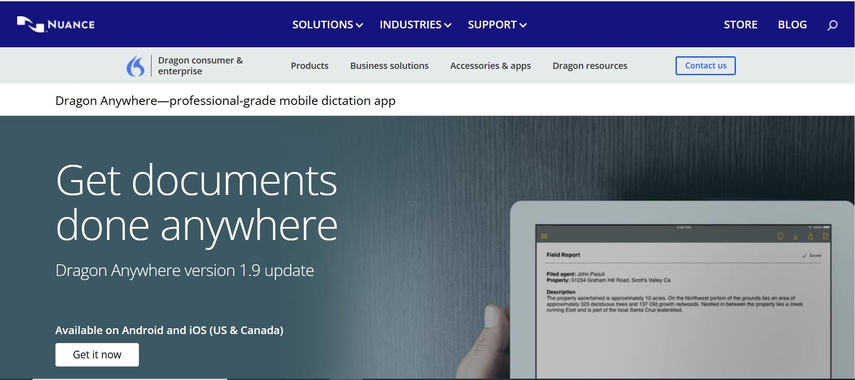
Pros
- Provides extensive personalization for application in various sectors.
- Cloud-based synchronization for access from multiple devices.
- Offline access is available once the software is installed.
Cons
- Subscription-based, which may be too costly for personal users?
- Training is necessary to achieve maximum accuracy.
- It does not work well with tone differences compared to other tools.
Part 3: How to Use HitPaw Univd for Speech to Text
HitPaw Univd is one powerful tool with very wide-ranging service regarding media conversions even to do Cantonese-to-text speech conversions. This converter fits any type of user as both ease in operation and impressive power, no less suitable for both novices and professionals alike; it enables smooth navigation across its interface while still doing some good transcriptions for users. Its advanced algorithms allow the software to differentiate between the subtle nuances of tones in Cantonese for high accuracy.

Here are the step-by-step detailed on how to use HitPaw Univd for Speech to Text:
Step 1: Select Speech to Text FeatureOpen HitPaw Univd and choose the Speech to Text option from the Toolbox.
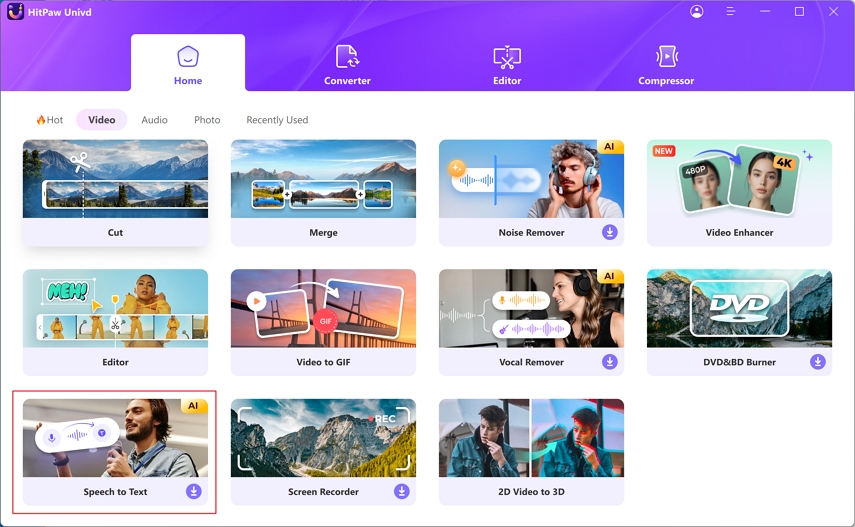
Step 2: Add Your Media
Drag or add a video/audio file to the Speech to Text interface, supporting over 1000 formats.
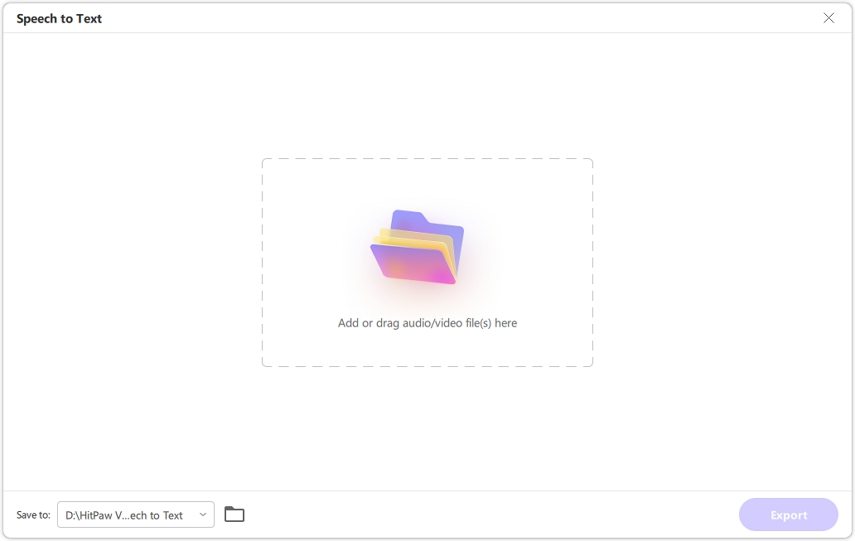
Step 3: Set Output and Language
Pick the output format (plain text or subtitles) and select the primary language.

Step 4: Click Create to Transcribe
Click the "Create" button to begin transcription.

Step 5: Plain Text Conversion
Choose .txt to transcribe voice to text without timestamps.
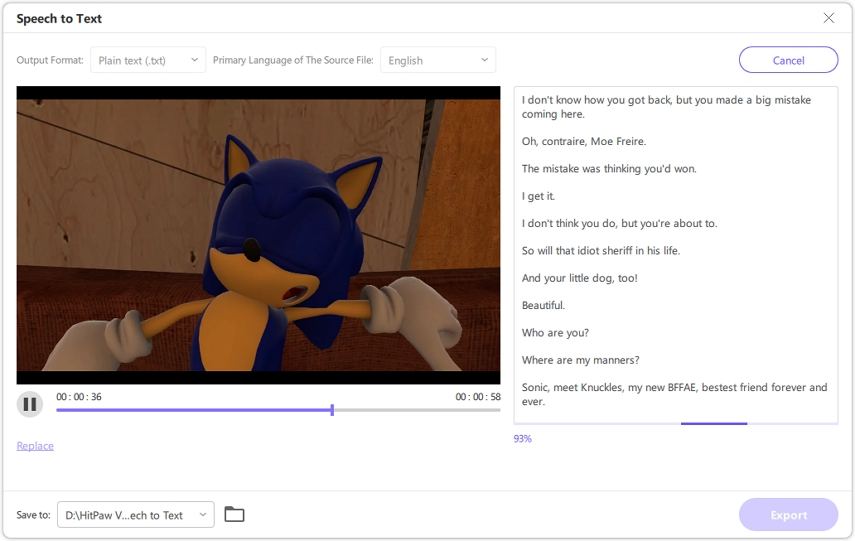
Step 6: Subtitles Conversion
Choose .srt to generate a subtitle file with timestamps.

Step 7: Preview and Export
Preview the transcription, and once satisfied, click "Export" to save the text or subtitles.
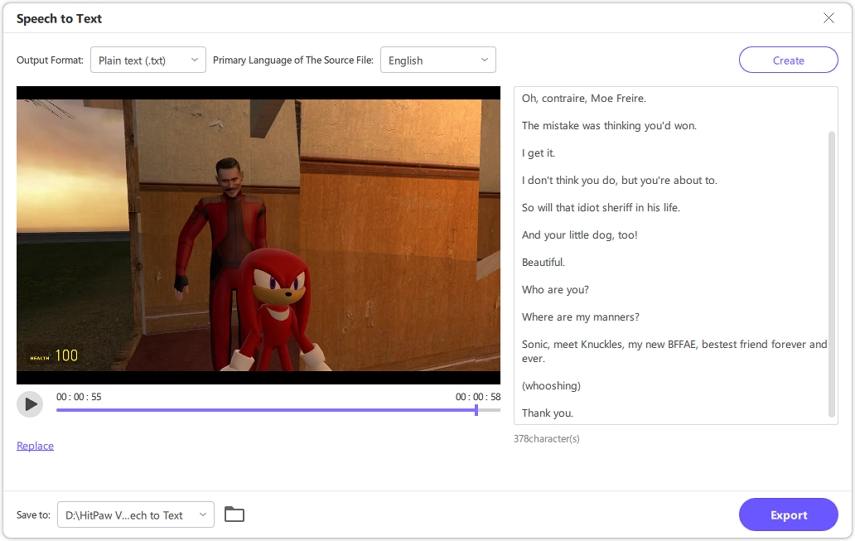
Part 4: FAQs About Cantonese Speech to Text
Q1. Can Cantonese speech-to-text tools differentiate tones accurately?
A1. Many of the high-end Cantonese speech-to-text systems are sensitive enough to identify tones, though the ability also depends on how advanced the speech-to-text tool is and also on the speaker's audio.
Q2. How can I improve the accuracy of Cantonese speech transcription?
A2. You could record in an noise-free room; speak clearly with good audio inputs; ensure periodic updates for best performance.
Conclusion
Cantonese speech to text technology provides many benefits towards better communication, increased productivity, and easier transcription jobs. The most important thing about overcoming challenges related to tone difference and dialect variations would be the correct tool. Here, among other tools, is HitPaw Univd: robust features and user-friendly interface, reliable with Cantonese. With its advanced technology, HitPaw Univd provides accurate transcriptions, making it an excellent choice for both personal and professional use, ensuring a smoother and more efficient workflow.






 HitPaw VikPea (Video Enhancer)
HitPaw VikPea (Video Enhancer)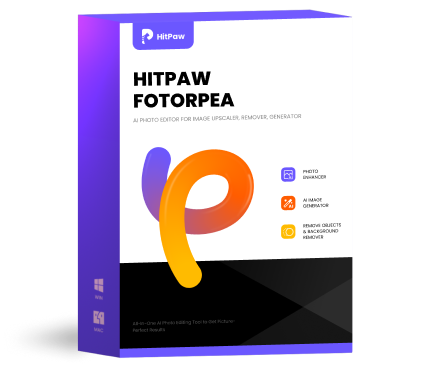 HitPaw FotorPea
HitPaw FotorPea HitPaw VoicePea
HitPaw VoicePea
Share this article:
Select the product rating:
Daniel Walker
Editor-in-Chief
My passion lies in bridging the gap between cutting-edge technology and everyday creativity. With years of hands-on experience, I create content that not only informs but inspires our audience to embrace digital tools confidently.
View all ArticlesLeave a Comment
Create your review for HitPaw articles